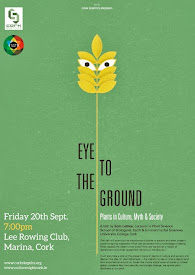Darwin Day Special: Darwin's 'Lost' Fossils
During the Summer of 2011, Howard Falcon-Lang was rummaging around in the windowless vaults of the British Geological Survey when he opened a drawer labelled simply "unregistered fossil plants".
What he found inside was a 'treasure trove' of fossils including some collected by Charles Darwin - who's birth we celebrate this weekend as Darwin Day!
“While searching through an old cabinet, I spotted some drawers marked ‘unregistered fossil plants’. I can’t resist a mystery, so I pulled one open. What I found inside made my jaw drop!” said Falcon-Lang.
“Inside the drawer were hundreds of beautiful glass slides made by polishing fossil plants into thin translucent sheets. This process allows them to be studied under the microscope. Almost the first slide I picked up was labeled ‘C. Darwin Esq.’ This turned out to be a piece of fossil wood collected by Darwin during his famous Voyage of the Beagle in 1834!”
The collection was put together by Darwin's good friend Joseph Hooker while he was employed by the Survey for a short time in 1846.
"The purpose of my visit was to locate some specimens of Carboniferous fossil wood from the Bristol Coalfield", wrote Falcon-Lang in Geology Today. "A rummage quickly turned up the sought after fossils but as we were preparing to leave, my eyes fell on a series of drawers marked ‘unregistered fossil plants’. I can’t resist a mystery, so I pulled one open".
Joseph Hooker (1817-1911) was one of the great botanists of his time and director of Kew Gardens for many years. The slide-mounted samples of fossilised plants in the newly re-discovered collection have the names of donors inscribed on the slides. At least two of the sections of fossil wood were obtained by Darwin during his famous voyage on the Beagle, from 1831 to 1836.
One of the samples (pictured above) comes from Chiloe Island, Chile a place Darwin visited in December 1834 and described it thus: "Chiloe, from its climate is a miserable hole".
There are many specimens from the collection which were not collected by Darwin although understandably given Darwin's fame his samples have stolen a lot of the attention. Other samples are associated with William Nicol, the pioneer of petrography (the detailed study of rocks).
Falcon-Long suggests that the collection probably got lost in the British Geological Survey's storage facility at Keyworth, near Nottingham, UK as a result of bad timing. The Survey didn't start formally registering its acquisitions until 1848. Since then, the samples seem to have been moved around London to various Museums, which at various times held geological collections. It probably arrived in Keyworth in the mid-eighties. Here, a process of cataloguing and photographing is currently ongoing so more fascinating discoveries may yet be waiting around the corner.
You can view a selection from the collection at the British Geological Survey's online museum.
What he found inside was a 'treasure trove' of fossils including some collected by Charles Darwin - who's birth we celebrate this weekend as Darwin Day!
“While searching through an old cabinet, I spotted some drawers marked ‘unregistered fossil plants’. I can’t resist a mystery, so I pulled one open. What I found inside made my jaw drop!” said Falcon-Lang.
“Inside the drawer were hundreds of beautiful glass slides made by polishing fossil plants into thin translucent sheets. This process allows them to be studied under the microscope. Almost the first slide I picked up was labeled ‘C. Darwin Esq.’ This turned out to be a piece of fossil wood collected by Darwin during his famous Voyage of the Beagle in 1834!”
The collection was put together by Darwin's good friend Joseph Hooker while he was employed by the Survey for a short time in 1846.
"The purpose of my visit was to locate some specimens of Carboniferous fossil wood from the Bristol Coalfield", wrote Falcon-Lang in Geology Today. "A rummage quickly turned up the sought after fossils but as we were preparing to leave, my eyes fell on a series of drawers marked ‘unregistered fossil plants’. I can’t resist a mystery, so I pulled one open".
 |
| Joseph Hooker |
One of the samples (pictured above) comes from Chiloe Island, Chile a place Darwin visited in December 1834 and described it thus: "Chiloe, from its climate is a miserable hole".
There are many specimens from the collection which were not collected by Darwin although understandably given Darwin's fame his samples have stolen a lot of the attention. Other samples are associated with William Nicol, the pioneer of petrography (the detailed study of rocks).
Falcon-Long suggests that the collection probably got lost in the British Geological Survey's storage facility at Keyworth, near Nottingham, UK as a result of bad timing. The Survey didn't start formally registering its acquisitions until 1848. Since then, the samples seem to have been moved around London to various Museums, which at various times held geological collections. It probably arrived in Keyworth in the mid-eighties. Here, a process of cataloguing and photographing is currently ongoing so more fascinating discoveries may yet be waiting around the corner.
You can view a selection from the collection at the British Geological Survey's online museum.


























0 comments:
Post a Comment